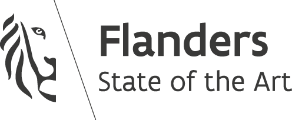Program – Corelli & Händel (claviorganum)
Content:
Instrumentation
oboe, 2 violins, viola, cello, theorbo / guitar & claviorganum / harpsichord & organ
Program
Corelli, Triosonata in f for two violins and continuo, op. 3/9
Grave, Vivace, Largo, Allegro
Händel, Triosonata in g for oboe, violin and continuo, HWV 390
III. Adagio, IV. Allegro
Händel, Harpsichord suite in d, HWV 428
Prelude, Allegro, Allemande
Corelli, La Follia, op. 5/12
Händel, Oboe concerto in g, HWV 287
Grave, Allegro, Sarabande (Largo), Allegro
-break-
Corelli, Triosonata in d for two violins and continuo, op. 1/11
Grave, Allegro, Adagio, Allegro
Corelli, Sonata con Aboé, WoO 4
Adagio, Allegro, Grave, Spirituoso et Adagio, Allegro
Händel, Il trionfo del Tempo e del Disinganno HWV 46a
Adagio from Sonata del Overtura
Händel, Harpsichord suite in d, HWV 428
Air with Doubles
Händel, Organ concerto “The Cuckoo and the Nightingale”, HWV 295
Larghetto, Allegro, Organo ad libitum, Larghetto, Allegro
Program text
When two musical greats meet in an ideal context, the score bursts with inspiration. This was the case in Rome in the years 1707-1710, when the young Georg Friedrich Haendel met Arcangelo Corelli, the brilliant violinist and composer of highly refined music for strings. Haendel wrote splendid solo parts for Corelli and Corelli acted as concertmaster in the performance of Haendel’s Italian oratorios, in which he also excelled as a soloist. Two instrumental genres are mainly associated with the Italian baroque: the sonata (solo and trio) and the concerto. Corelli’s four collections of trio sonatas for two violins and basso continuo are the absolute reference for this genre, in which, in addition to lyrical-melodic development, the interactive dialogue between the various partners is also central. Many of his sonatas are also distinguished by strongly expressively charged keys, such as the choice of the tormented key of fa minor in op. 3, no. 9 and the chromaticism in the second movement of op. 1 no. 11. In his Trio Sonata HWV 390, Haendel clearly mirrored Corelli as an ideal model. Corelli’s opus 5 are solo sonatas for violin and basso continuo, the last composition of which is a fascinating Follia, a virtuoso series of variations on an ostinato bass formula, in which the composer explores the most diverse emotions. This richness of emotional impact leaves the performers the option of accentuating it even more with a changing color palette of continuo colours. An exceptional work is Corelli’s only known work for oboe, an instrument that was still in full development at the time and that the young Handel had already expertly soloed in his Oboe Concerto HWV 287.
Although Haendel’s name remains primarily associated with vocal music, especially operas and oratorios, which he composed in England from 1712 onwards, he also excelled in instrumental genres, such as the suite for harpsichord, in which often abstract movements (prelude, allegro ) alternate with dances or dance-like pieces (allemande, courante) and a beautiful air with five variations (air & doubles). His organ concertos are also justifiably popular, which he often performed, as a novelty, between the acts of his oratorios. Stylistically, they lend themselves perfectly to performance on an intriguing and versatile instrument: the claviorganum, in which strings, as on the harpsichord, and pipes, as on the organ, are combined within one whole. It is known that Handel had such an instrument. Because harpsichord and organ can sound both separately and together, the instrument offers many possibilities for coloristic effects. Haendel makes grateful use of this in his Organ Concerto HWV 295, known as ‘The Cuckoo and the Nightingale’, in which he evoked a spring atmosphere for his audience in April 1739 with imitations of bird sounds.
Ignace Bossuyt


